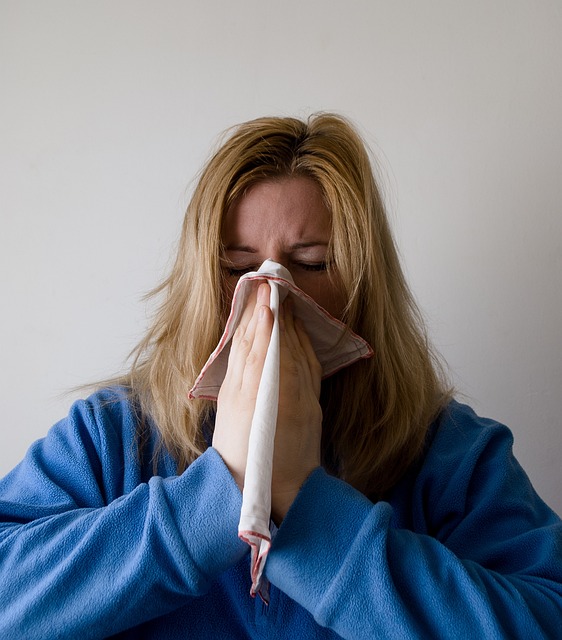Common Pet Allergies and How to Manage Them
As the number of people living with allergies continues to rise, it’s essential to understand the common pet allergies and their impact on our lives. Pets are beloved companions, but for those who suffer from allergies, they can be a source of discomfort and distress. In this article, we’ll delve into the world of pet allergies, exploring their causes, symptoms, and most importantly, how to manage them.
Firstly, let’s look at some statistics: According to the Asthma and Allergy Foundation of America (AAFA), approximately 10% of people in the United States suffer from pet allergies. This translates to around 30 million Americans who experience allergy symptoms when exposed to pets. But why do we react to our furry friends?
The main culprit behind pet allergies is a protein called Fel d 1, found in the saliva and skin of cats, or Can f 1 in dogs. When these animals groom themselves, they deposit this protein onto their coats, which then becomes airborne when they shed or move around. Humans with allergies are more likely to be affected if they have a weakened immune system or if they’re exposed to high concentrations of pet dander.
Causes and Risk Factors
So, who’s at risk of developing pet allergies? While anyone can develop an allergy to pets, some people are more susceptible than others. These include:
* Individuals with asthma or other respiratory conditions
* Those with weakened immune systems (e.g., due to chronic illness or medication)
* People living in areas with high levels of air pollution
It’s also worth noting that certain breeds of dogs and cats are more likely to trigger allergies than others. For example, Sphynx cats, who have a lower amount of dander, may be a better choice for allergy sufferers.
Symptoms
The symptoms of pet allergies can range from mild discomfort to life-threatening reactions. Common symptoms include:
* Sneezing and congestion
* Runny nose and itchy eyes
* Coughing and wheezing
* Skin rashes or hives
In severe cases, anaphylaxis – a potentially life-threatening allergic reaction – can occur. If you suspect anaphylaxis in yourself or someone else, seek medical attention immediately.
Managing Pet Allergies
While there’s no surefire way to completely eliminate pet allergies, there are steps you can take to manage your symptoms:
* Keep your home clean: Regular vacuuming with a HEPA-filter vacuum cleaner can help reduce the amount of pet dander in your home.
* Use allergen-reducing products: Products containing anti-allergenic sprays or wipes can help reduce pet dander and other allergens.
* Consider immunotherapy: If you’re allergic to pets but want to own one, consider consulting an allergist about immunotherapy options.
Preventing Allergic Reactions
While it’s impossible to completely prevent allergic reactions, there are steps you can take to reduce your risk:
* Wash your hands regularly: After handling your pet, wash your hands thoroughly with soap and water.
* Keep your home well-ventilated: Open windows and use air purifiers to improve indoor air quality.
* Consider a HEPA-filter air purifier: These devices can capture 99.97% of particles as small as 0.3 microns, including pet dander.
Choosing the Right Pet Insurance Plan
If you’re allergic but still want to own a pet, consider investing in a comprehensive pet insurance plan. This will help cover veterinary costs if your allergy triggers an unexpected reaction. For more information on choosing the right pet insurance plan, click here: How to Choose the Right Pet Insurance Plan
Essential Vaccinations for Your Canine Companion
In addition to managing your allergies, it’s also essential to ensure your pet receives all necessary vaccinations. For more information on essential vaccinations for your canine companion, click here: Essential Vaccinations for Your Canine Companion
Conclusion
Pet allergies can be a significant challenge, but with the right knowledge and strategies, you can manage your symptoms and enjoy quality time with your furry friend. By understanding the causes of pet allergies, recognizing symptoms, and taking steps to prevent allergic reactions, you can create a healthier and happier environment for both you and your pet.
Remember, while there’s no cure for pet allergies, there are many ways to reduce their impact on your life. Whether you’re allergic or not, owning a pet can be an incredibly rewarding experience – with the right precautions and knowledge, anyone can enjoy the companionship of their furry friend.
If you suspect you have a pet allergy but aren’t sure what to do next, consult with your doctor or allergist for personalized advice. With the right guidance, you can navigate the world of pet allergies with confidence and make informed decisions about your health and well-being.

